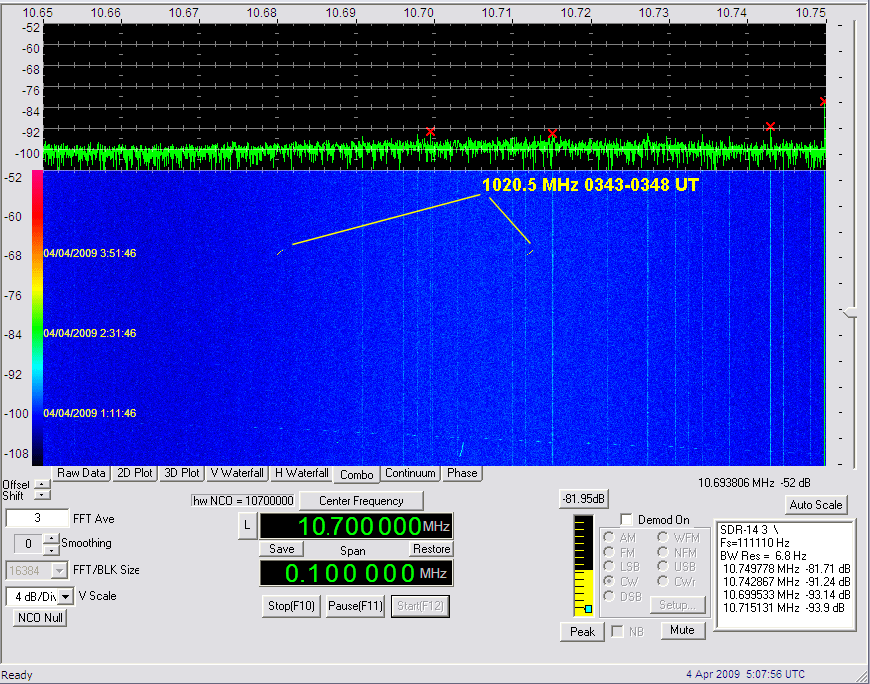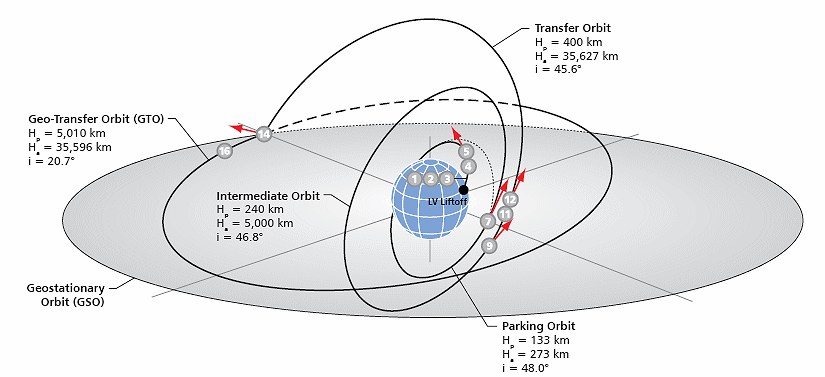
Sven Grahn
The Proton-M rocket with the Eutelsat W2A satellite took off from Baikonur at 1624 UT on 3 April 2009. It flight profile is shown in the graphics below taken from ILS's web site. I have added the time a few critical events.

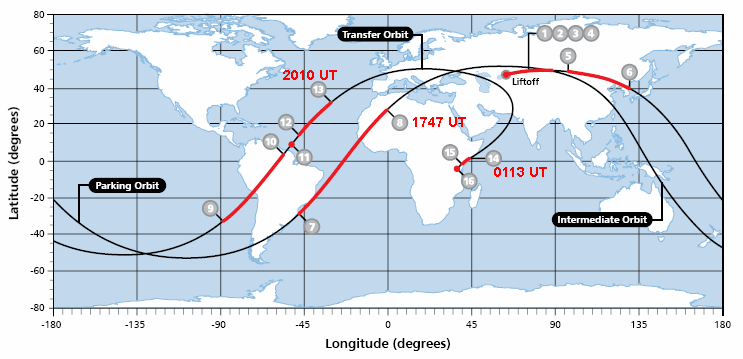
| Date | Time (UT) | Frequency | Remarks |
| 3 April 2009 | 1752.10-18.11.55 | 1018.5 and 1020.5 MHz | Modulation visible from 1805 UT |
| 3 April 2009 | 2014.11-2020 | 1018.5 MHz | Faded out |
| 3 April 2009 | 2023.00-2028.00 | 1020.5 MHz | Burst, single carrier first then two 12.8 kHz apart |
| 3 April 2009 | 2035.00-2040.00 | 1018.5 MHz | - |
| 3 April 2009 | 2043.00-2048.00 | 1020.5 MHz | Strong carrier |
| 3 April 2009 | 2217-2243 | 1020.5 MHz | Strong carrier (about 25 min burst) |
| 4 April 2009 | 0009-0036 | 1020.5 MHz | Strong carrier (about 25 min burst) |
| 4 April 2009 | 0024-0055 | 1020.5 Mhz | Frequency sweep +/-50 kHz around 1020.5 MHz |
| 4 April 2009 | 0343-0348 | 1020.5 MHz | Two carriers 32 kHz apart. |
I expected first signals from the Briz-M shortly after 1747 UT. A carrier on 1018.5 MHz appeared at 1752.10 UT, but it was weak and faded out rather rapidly. Instead a very strong carrier appeared on 1020.5 MHz. Signs of modulation spectral components appeared at about 1805 UT (see spectrogram below). The signal on 1020.5 MHz faded out at 1811.55 UT, i.e after 19 minutes 45 seconds.
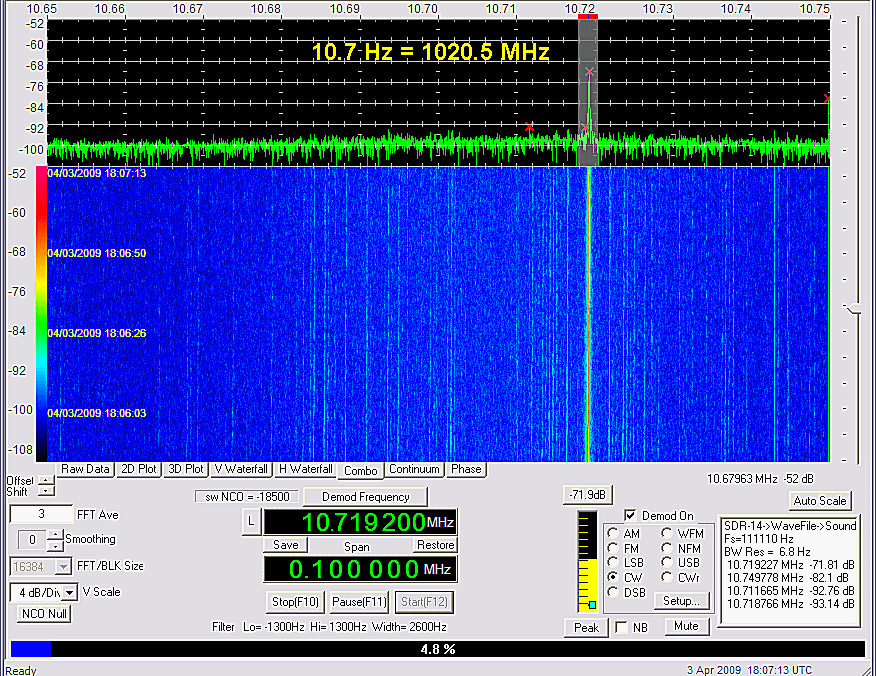
I expected that the next opportunity to pick up signals would come shortly fter 2010 UT (See map). signals appeared on 1018.5 MHz at 2014.11 UT but it faded out and at about 2023.00 UT strong signals again appeared on 1020.5 MHz.
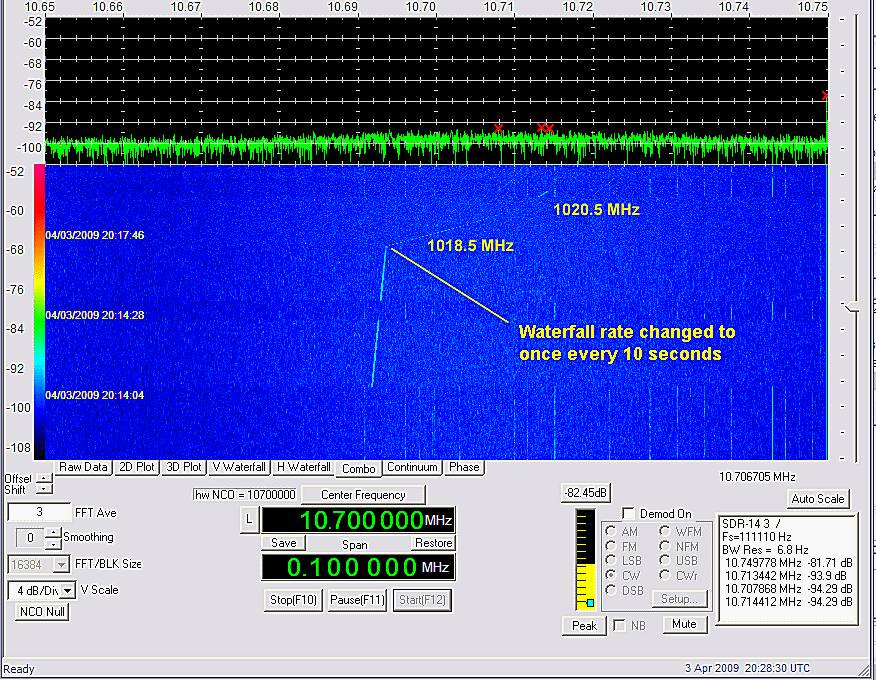
In the figure below one can notice that the carrier on 1020.5 MHz split into two carriers 12.8 kHz apart and the faded out at 2028.00 UT. The signal returned briefly on 1018.5 at 2035-2040 UT..A strong carrier came back on 1020.5 MHz at 2043.00 UT and lasted 5 minutes.
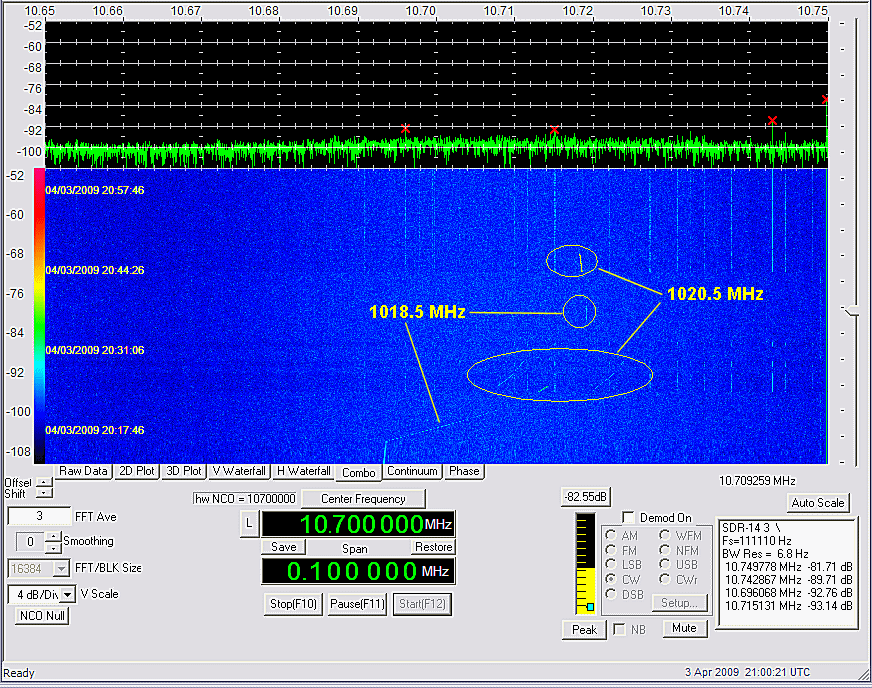
After this reception I switched the receiving system to one sample every 60 seconds and left it running overnight. The carrier on 1020.5 MHz came back again at 2217-2243 UT and 0009-0036 UT. Overlapping this last carrier period was a slow frequency sweep from about 50 kHz above 1020.5 MHz to 50 kHz below 1020.5 MHz. The sweep lasted during the period 0024-0055 UT. This sweep coulf not be the doppler shift of a passing LEO satellite because it is going in the wrong direction (at this frequency my receiving set-up inverts the doppler shift). In addition the frequency sweep seems to be absolutely linear. What could it be? A ranging frequency sweep? It is a very slow frequency sweep, so I wonder if really is a ranging sweep. But what is it? Just afreak co-incidence?
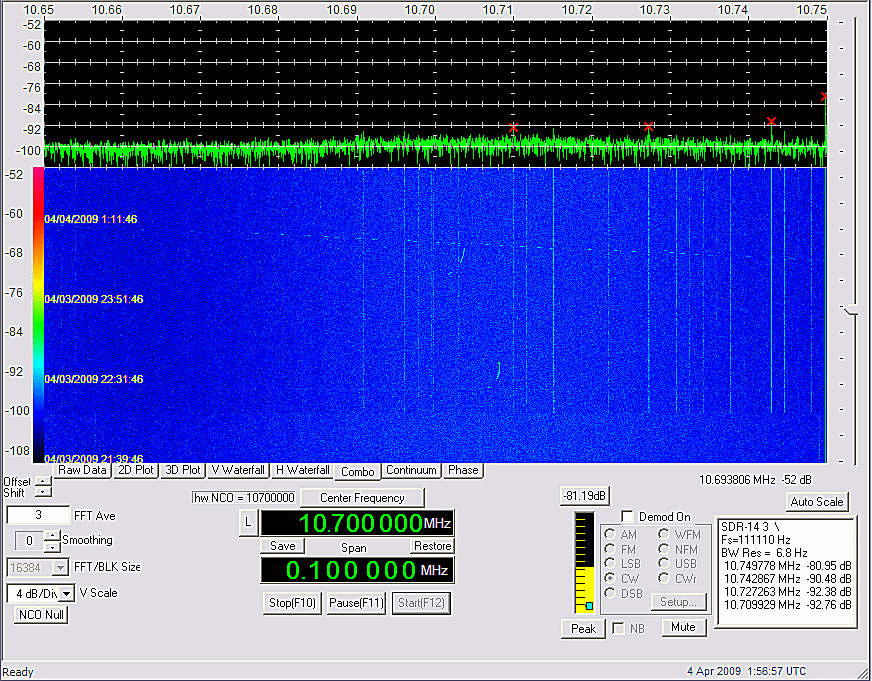
The last signals picked up from this mission appeared on 1020.5 MHz at 0343-0348 UT and the were two carrier 32 kHz apart. (See spectrogram below).
